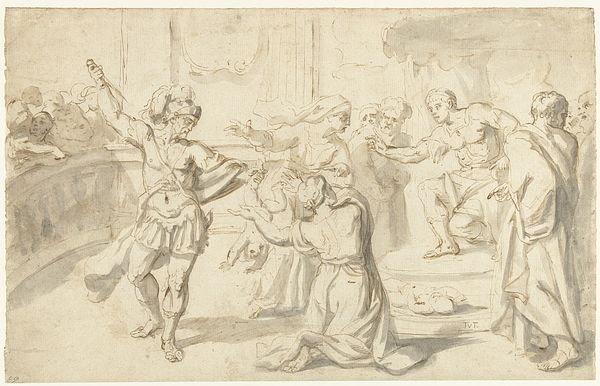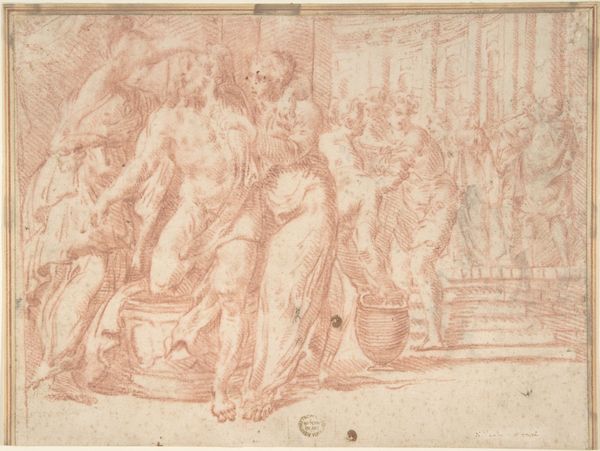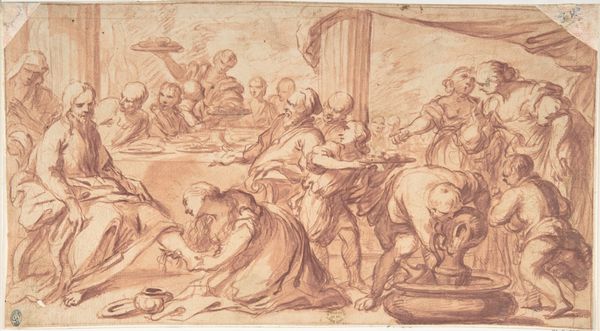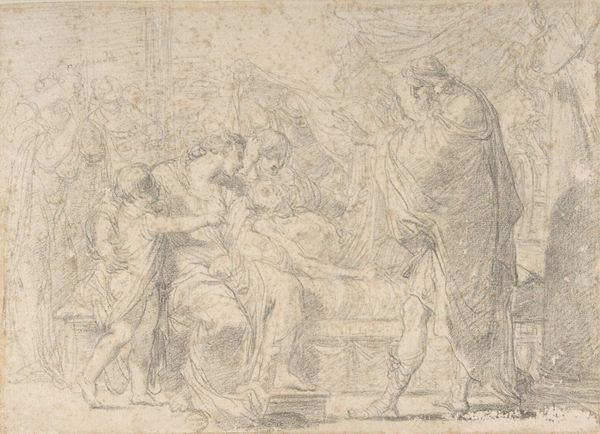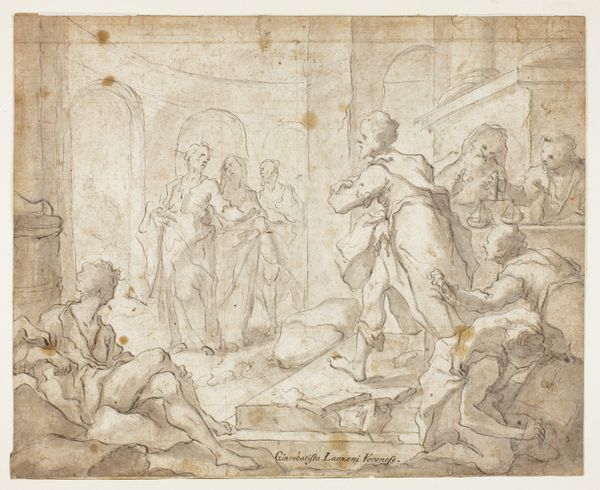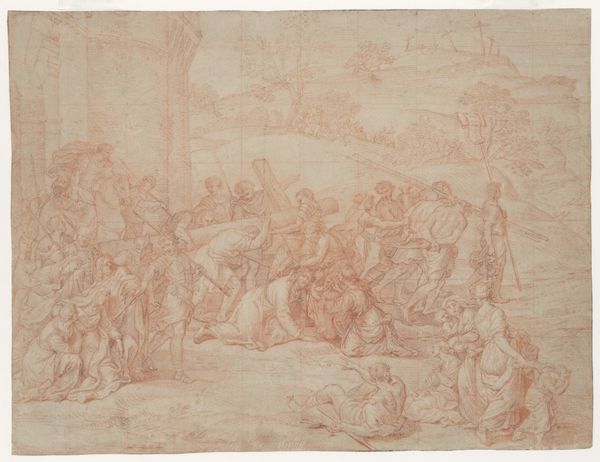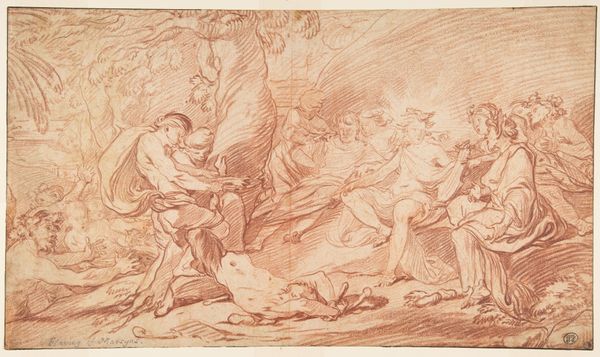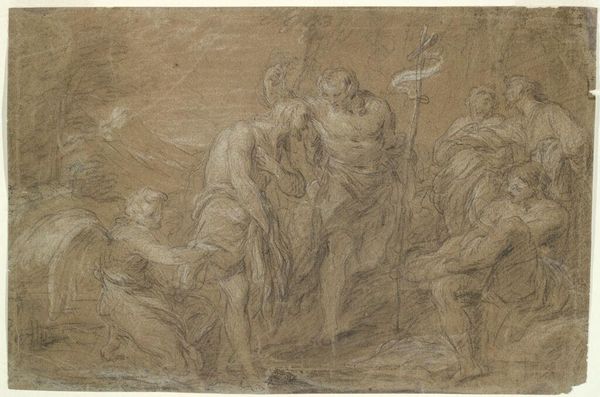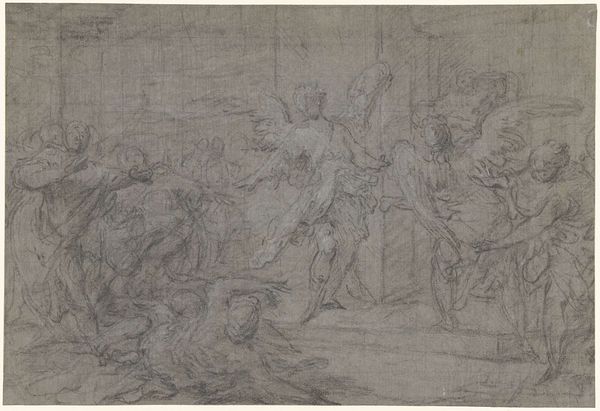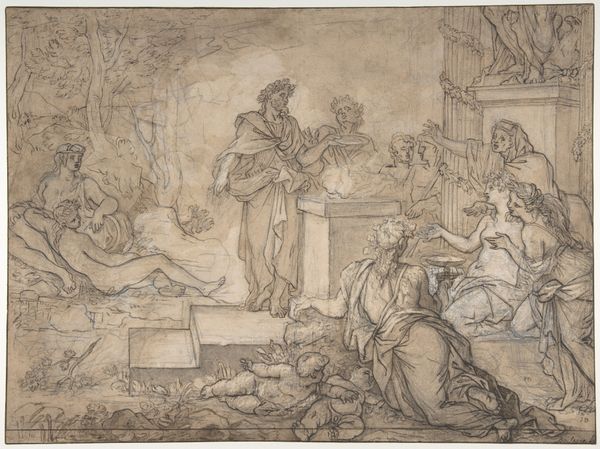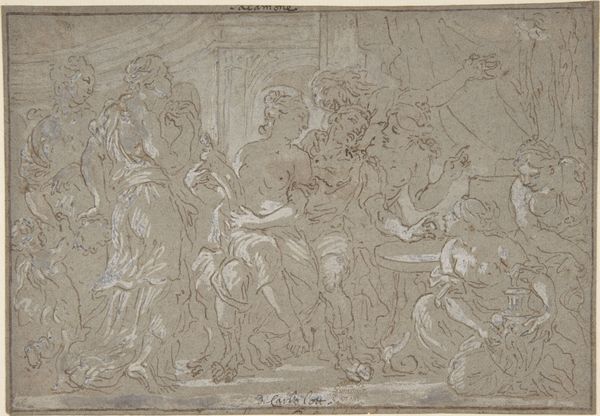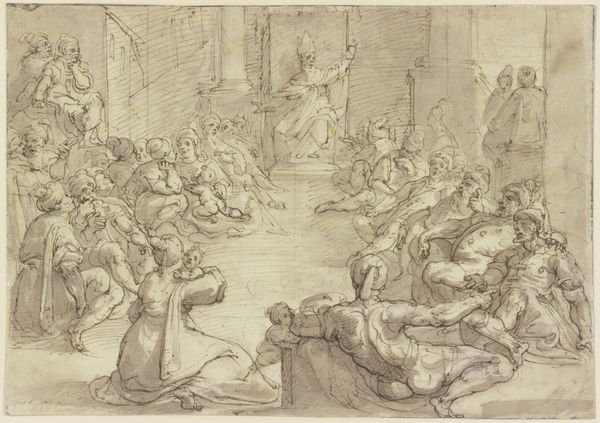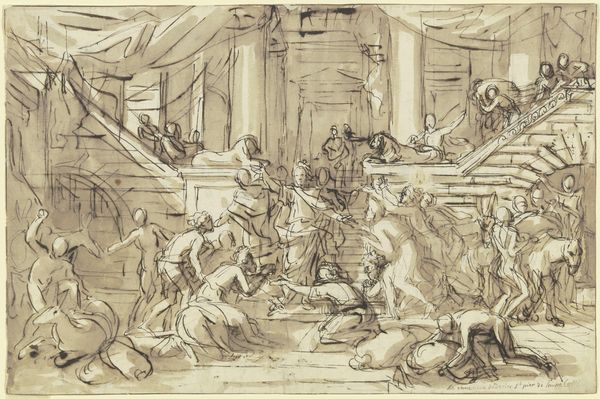
Scene from Ancient History (recto); Leg and Arm of a Nude Male Figure (verso) 1738 - 1770
0:00
0:00
drawing, pencil
#
drawing
#
narrative-art
#
baroque
#
figuration
#
pencil
#
history-painting
#
male-nude
Dimensions: 9 15/16 x 15 3/8in. (25.2 x 39.1cm)
Copyright: Public Domain
Editor: So, this is Nicola Marcola's "Scene from Ancient History," created sometime between 1738 and 1770. It's a pencil drawing. There's so much going on; it feels incredibly busy, almost chaotic. What jumps out at you about this piece? Curator: I see a staged drama, but also a study in labor. Notice the rapid, repetitive strokes? This wasn’t necessarily about producing a pristine, finished object. It was more about the *act* of drawing, of working through an idea. We're seeing Marcola’s process laid bare, his studio practice if you will. Consider the sheer effort embedded in producing an image of this scale with just pencil and paper. Does that change how you perceive its "chaotic" nature? Editor: It does shift my perspective a bit. Knowing it's about the *making* helps me appreciate the energy in the sketchiness. But, I am curious – why history painting? What significance does the subject matter hold in connection with your approach to materiality and labor? Curator: History painting, especially scenes from antiquity, was prestigious. Reproducing scenes from classical antiquity was a labor-intensive means to participate in and establish their status as a skilled artist. This work allowed artists like Marcola a vehicle to climb the ranks and find lucrative work. By investigating that history, we get a more profound awareness of his own ambitions and of the system of artistic production that enabled it. Editor: That's a great point – it connects the artistic labor to a larger social and economic framework. Thanks for opening my eyes to that connection. Curator: And thank you. Looking closely at these sketches reminds us that art is not just about the final product, but about the sweat, decisions, and socio-historical influences embedded within its creation.
Comments
No comments
Be the first to comment and join the conversation on the ultimate creative platform.
